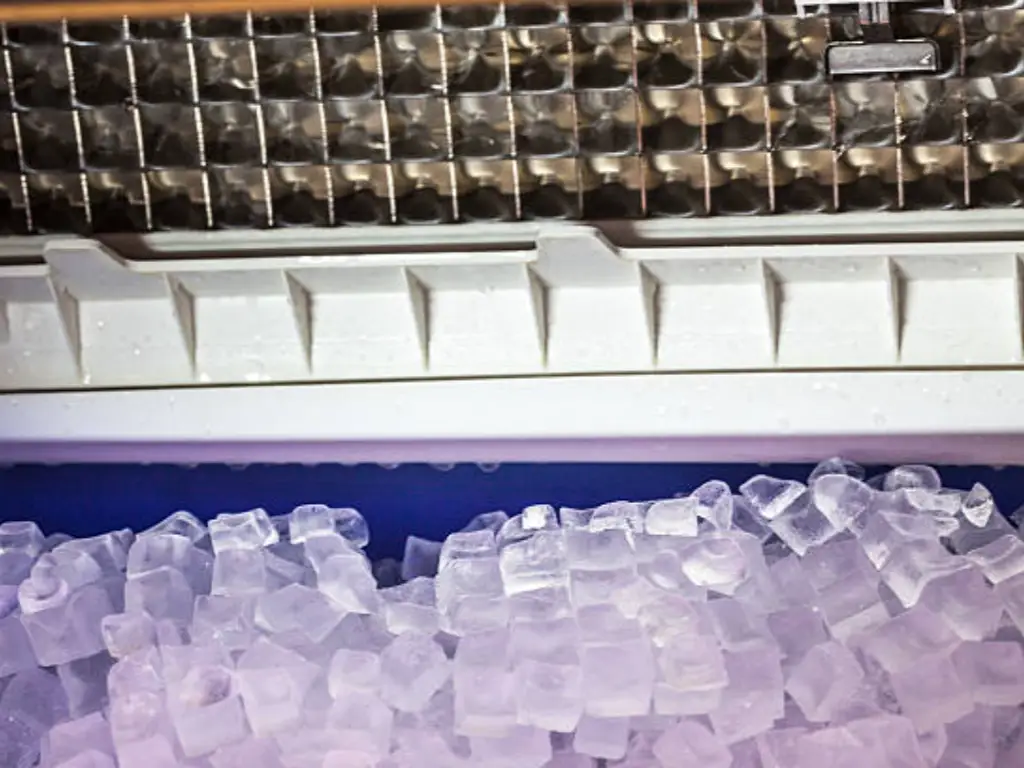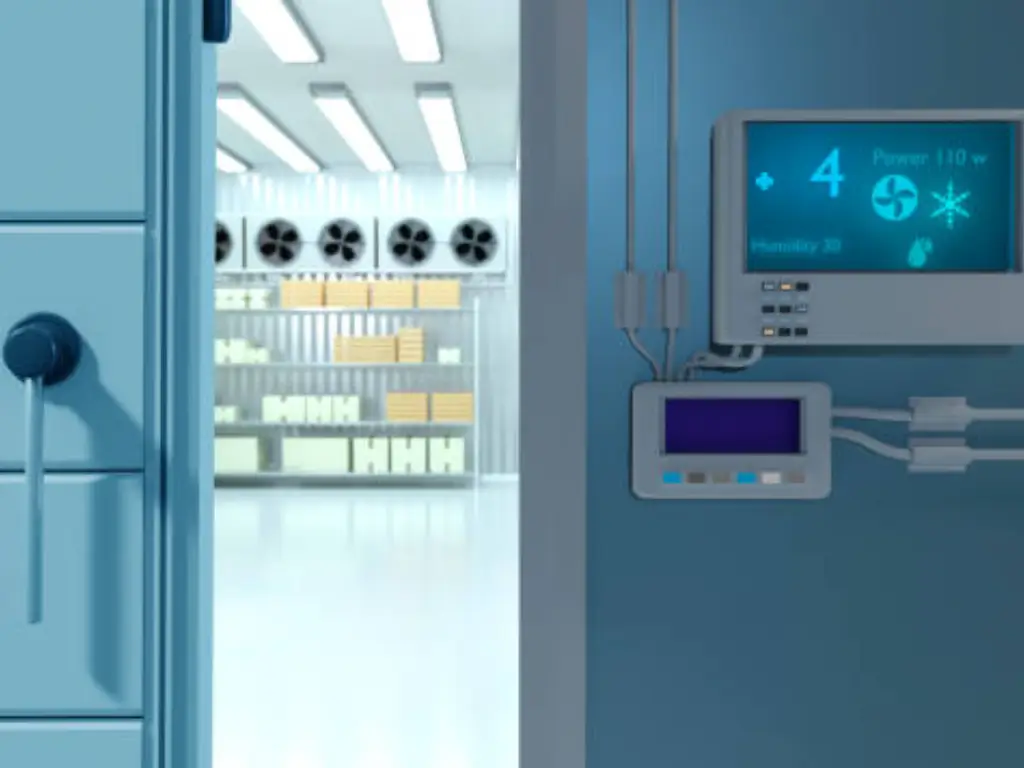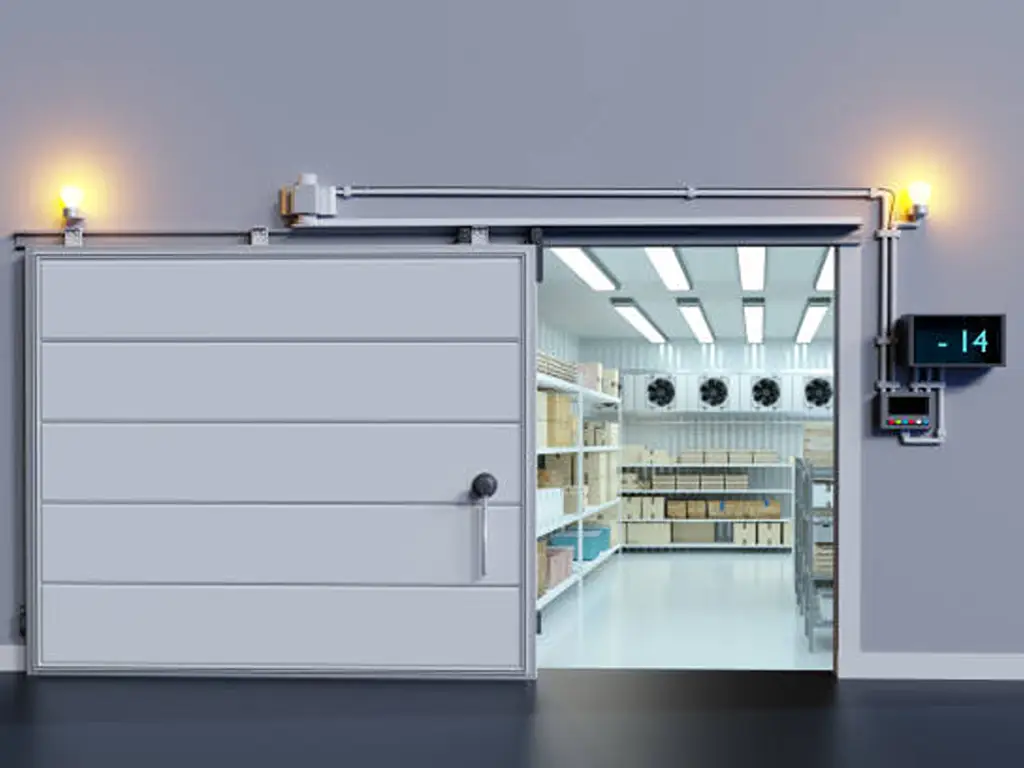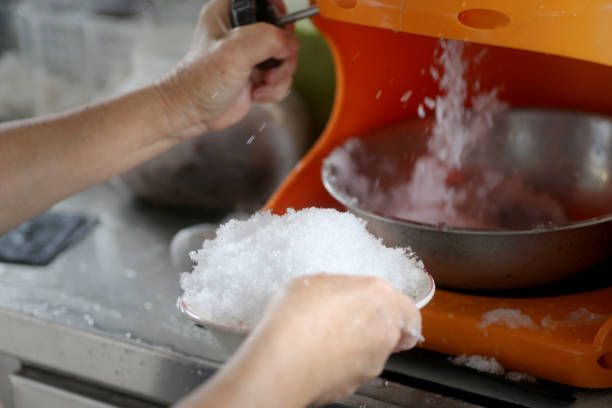Le maintien de la propreté dans une cuisine commerciale est essentiel. Un espace de travail bien organisé et sanitaire rend non seulement la préparation des aliments plus efficace, mais réduit également le risque de contamination. Plus, Une cuisine impeccable crée une impression positive et instille la confiance dans le personnel et les clients.
Cette norme s'applique à toutes les zones de la cuisine, Pas seulement les stations de préparation des aliments. Étages, réfrigérateurs, et les étagères de stockage nécessitent tous un nettoyage régulier. Un endroit communément négligé est le congélateur de plain-pied sol. Puisqu'il n'est pas toujours évident quand il a besoin d'attention et de trouver du temps pour le nettoyer peut être difficile - il est facile de négliger. Cependant, Permettre à la saleté et à la crasse s'accumuler peut entraîner la croissance des moisissures et les odeurs désagréables.
Pour garder votre plancher de congélation neuf ou d'occasion en parfait état, Suivez ce guide de nettoyage étape par étape.
À quelle fréquence devriez-vous nettoyer votre Congélateur commercial?
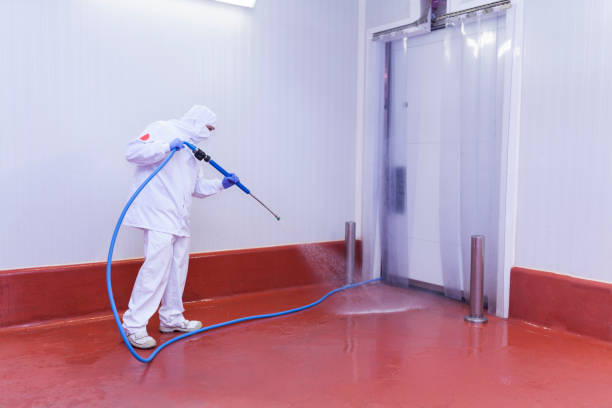
Un congélateur commercial doit être nettoyé régulièrement pour maintenir l'hygiène et l'efficacité. Tandis que le nettoyage en profondeur doit être effectué au moins une fois par mois, Le nettoyage des points doit être effectué chaque semaine pour éviter les déversements et l'accumulation de débris. Les entreprises manipulant les aliments devraient se conformer aux réglementations sur la santé et la sécurité, qui nécessitent souvent un nettoyage fréquent pour empêcher la croissance bactérienne et la contamination.
Pour les congélateurs utilisés dans les industries autonomes ou les usines de glace, Le nettoyage fréquent est particulièrement important en raison de l'accumulation d'humidité qui peut entraîner une accumulation de glace et des risques de glissement.
Préparation du processus de nettoyage

Avant de commencer à nettoyer votre plancher de congélateur commercial, Une bonne préparation est nécessaire pour assurer un processus lisse et efficace. Voici ce que vous devez faire:
- Rassembler les fournitures - Utilisez des produits de nettoyage sans congé. Évitez l'eau excessive car elle peut refreindre et créer des risques glissants.
- Portez un équipement approprié - Puisque les congélateurs sans rendez-vous fonctionnent à des températures extrêmement basses, Il est important de porter des gants isolés, Chaussures résistantes au glissade, et des vêtements chauds.
- Déplacer les produits dans une zone sûre - si nécessaire, Déplacer temporairement les articles périssables pour éviter la contamination ou la détérioration pendant le processus de nettoyage.
- Assurer une bonne ventilation - Cela empêche les fumées de nettoyer les produits de s'attarder à l'intérieur du congélateur.
Maintenant que tu es prêt, Plongeons dans le guide étape par étape pour nettoyer correctement votre plancher de congélateur.
Guide étape par étape pour nettoyer le sol de votre congélateur commercial
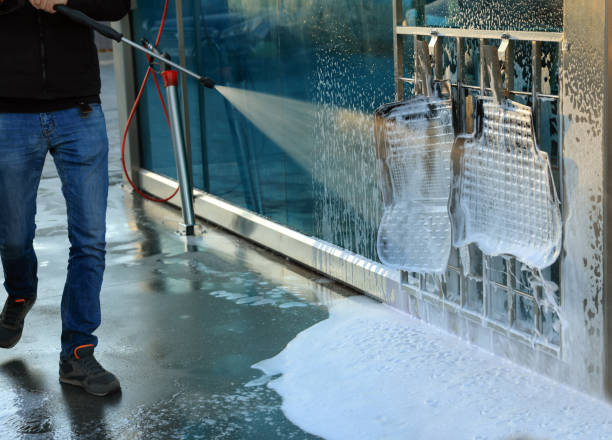
Étape 1: Retirer les gros débris
Commencez par balayer le sol avec un balai à poil rigide pour éliminer les gros débris, particules de nourriture, et accumulation de glace. Si votre plancher de congélateur a des plaques de glace, les gratter doucement avec un grattoir en plastique. Évitez d'utiliser des outils métalliques, Comme ils peuvent endommager le sol.
Pour les usines de glace ou les environnements de rois élevé, L'accumulation de glace peut être plus grave. Dans de tels cas, Utilisez une solution de désinfusion sécurisée ou appliquez chaud (pas chaud) l'eau en petites quantités pour desserrer les plaques de glace.
Étape 2: Plandre de vadrouille avec produit propre au congélateur
Après avoir nettoyé le sol des gros débris, L'étape suivante est le nettoyage. Les produits de nettoyage de congélation spécialisés sont conçus pour lutter contre les taches difficiles sans congélation lors de l'application. En revanche, Les produits chimiques de nettoyage standard ont tendance à avoir un point de congélation plus élevé, ce qui peut entraîner une accumulation de glace sur les surfaces. Cela rend non seulement le nettoyage futur plus difficile, mais crée également un risque de glissement pour les employés.
Pour minimiser le risque d'un sol glissant pendant les opérations de la cuisine, C'est une bonne idée de sécher la nettoyage après le frottement. En plus, pour les plus grands congélateurs de rendez-vous, Envisagez de placer les panneaux de plancher humide comme mesure de sécurité. Si le congélateur est particulièrement spacieux, Un Scrubber automatique peut être une alternative plus efficace à la méthode traditionnelle de vadrouille et de seau.
Étape 3: Remplacez les produits que vous avez supprimés avant le nettoyage
Une fois le sol propre et complètement sec, Retournez tous les produits à leurs spots désignés. Réorganiser l'inventaire pour assurer un accès facile, Après le premier dans, Premier (Fifo) système pour empêcher les articles expirés d'être négligés.
En plus, Profitez de cette occasion pour inspecter le revêtement de sol, rayonnage, et les murs du congélateur pour tout signe de dommage, moule, ou des fuites.
Conseils pour maintenir un sol congélateur propre
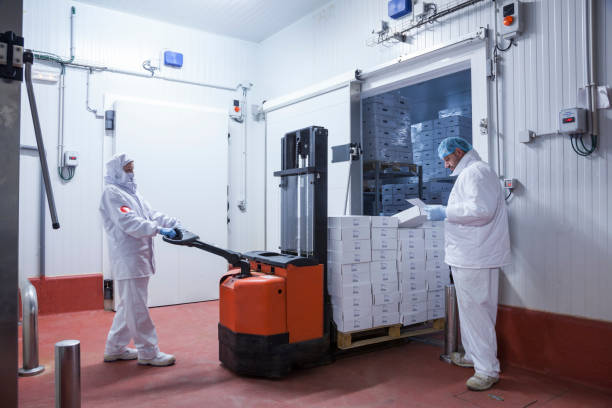
L'entretien régulier empêche l'accumulation de glace excessive, contamination bactérienne, et les risques de sécurité. Voici quelques conseils de maintenance efficaces sur le plancher du congélateur:
Gardez les portes fermées
Cela peut sembler un bon sens, Mais garder votre congélateur commercial correctement scellé est essentiel. Ces portes de congélateur sont conçues pour une isolation maximale, Ainsi, même un léger espace peut permettre à l'air froid de s'échapper ou de l'air chaud d'entrer. Cette fluctuation de la température peut entraîner une accumulation de glace et une croissance des moisissures, dont sont mieux évitées.
Nettoyer les sols à l'extérieur du congélateur
La saleté et les débris des zones à fort trafic à l'extérieur du congélateur peuvent facilement être suivis à l'intérieur. Les zones adjacentes de balayage et de nettoyage régulièrement réduisent la contamination.
Surveiller la température du congélateur
Surveillez les températures de votre congélateur quotidiennement pour vous assurer qu'ils restent dans la gamme appropriée. Comme mentionné précédemment, Les fluctuations peuvent entraîner de graves problèmes dans un congélateur sans rendez-vous. La meilleure façon d'empêcher cela est de contrôler des températures cohérentes.
Si vous remarquez que la température augmente ou tombe au-delà de la plage idéale, aborder le problème immédiatement. Pour une précaution supplémentaire, Envisagez d'avoir un électricien inspecter périodiquement le câblage du congélateur pour attraper des problèmes potentiels avant de dégénérer.
Éteignez les lumières lorsqu'elles ne sont pas utilisées
Les lumières du congélateur génèrent une petite quantité de chaleur, ce qui peut sembler négligeable mais peut devenir problématique s'il est laissé pendant de longues périodes. Les désactiver non seulement aide à maintenir des conditions optimales de congélateur, mais contribue également à la propreté globale et réduit les coûts énergétiques.
Vérifiez et nettoyez les bobines de condenseur, Fans, Évents, Etc.
Enfin, Il est important de se rappeler que de nombreux composants de congélateur nécessitent un nettoyage régulier au-delà du sol. La bobine d'évaporateur, bobines de condenseur, Et les fans ont tous besoin de maintenance de routine, tout comme les murs du congélateur.
L'utilisation d'une brosse à poils rigide et de produits de nettoyage de congélation spécialisés peut éliminer efficacement les débris et l'accumulation de ces surfaces. Comme toujours, Assurez-vous de couvrir tous les aliments avant d'appliquer des produits chimiques de nettoyage pour éviter la contamination.
Conclusion
Un nettoyage congélateur commercial Le sol est crucial pour maintenir la sécurité alimentaire, Réduire dans l'ensemble coût, Prévenir les risques de glissement, et assurer l'efficacité de votre système de refroidissement. En suivant une routine de nettoyage structurée et en mettant en œuvre des pratiques de maintenance appropriées, Vous pouvez prolonger la durée de vie de votre congélateur et améliorer la sécurité au travail.
Que vous gérez une glaçon, restaurant, ou centre de distribution alimentaire en gros, Garder votre plancher de congélateur sans tache assure une opération fluide et sûre. Commencez à appliquer ces meilleures pratiques aujourd'hui!
FAQ
À quelle fréquence un congélateur commercial doit-il être nettoyé?
Les congélateurs commerciaux doivent être nettoyés au moins une fois par mois, y compris l'inspection de l'équipement et des sols et surfaces de nettoyage. En plus, Les composants mécaniques tels que les ventilateurs et les bobines d'évaporateur nécessitent un nettoyage en profondeur complet au moins une fois par an pour assurer des performances et une efficacité optimales.
Comment nettoyer un sol du congélateur sans l'éteindre?
Pour nettoyer un sol du congélateur sans l'éteindre, Utilisez une sécurité de congélateur, Nettoyer à faiblesse et une vadrouille ou un épurateur. Évitez d'utiliser un excès de liquide pour éviter l'accumulation de glace, et choisissez non corrosif, Solutions de nettoyage de l'alimentation qui fonctionnent à basse température.
Comment nettoyez-vous un réfrigérateur à l'introduction commerciale?
Le nettoyage d'un réfrigérateur sans rendez-vous suit un processus similaire au nettoyage du congélateur mais avec différentes solutions de nettoyage. Utilisez un non-toxique, nettoyant de qualité alimentaire et assurer un séchage approprié pour éviter la croissance des moisissures et des bactéries.
Puis-je utiliser un produit de nettoyage domestique régulier pour nettoyer mon sol de congélateur commercial?
Non, Les produits de nettoyage des ménages ne conviennent pas aux planchers de congélateur commercial. Beaucoup contiennent des produits chimiques qui peuvent geler au contact, laisser des résidus derrière. Utilisez toujours une qualité commerciale, Nettoyer à basse température spécialement conçu pour les environnements de congélateur.

